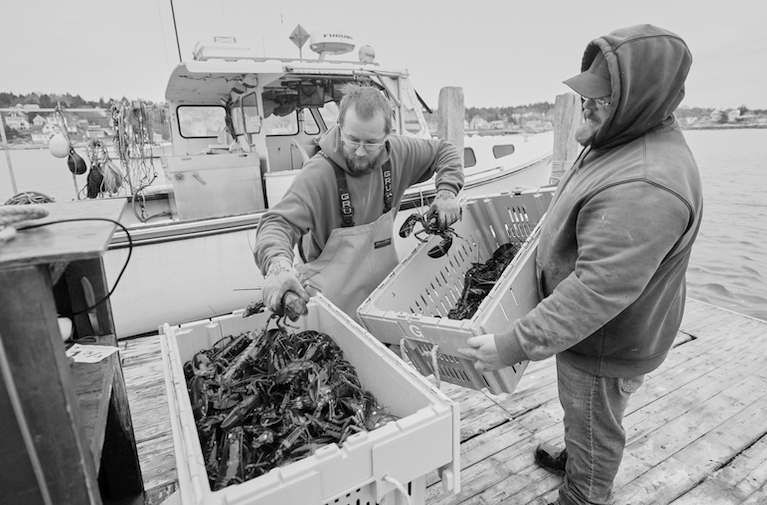STONINGTON, Maine (AP) — Virginia Olsen has pulled lobsters from Maine’s chilly Atlantic waters for decades while watching threats to the state’s lifeblood industry mount.
Trade imbalances with Canada, tight regulations on fisheries and offshore wind farms towering like skyscrapers on open water pose three of those threats, said Olsen, part of the fifth generation in her family to make a living in the lobster trade.
That’s why she was encouraged last month when President Donald Trump signed an executive order that promises to restore American fisheries to their former glory. The order promises to shred fishing regulations, and Olsen said that will allow fishermen to do what they do best: fish.
Olsen knows firsthand how much has changed over the years. Hundreds of fish and shellfish populations globally have dwindled to dangerously low levels, alarming scientists and prompting the restrictions and catch limits that Trump’s order could wash away with the stroke of a pen. Yet she’s heartened that the livelihoods of people who work the traps and cast the nets have become a priority in faraway places where they often felt their voices weren’t heard.
“I do think it’s time to have the conversation on what regulations that the industry does need. We’re fishing different than we did 100 years ago,” she said. “If everything is being looked at, we should be looking at the regulations within the fishing industry.”
Yet if fishing and lobstering interests finally have a seat at the table, the questions become how much seafood can be served there, and for how long. Trump’s April 17 order, called “Restoring American Seafood Competitiveness,” promises an overhaul of the way America fishes, and cites a national seafood trade deficit of more than $20 billion as the reason to do it. The order calls on the federal government to reduce the regulatory burden on fishermen by later this month.
It arrives at a time when conservation groups and many marine scientists say the ocean needs more regulation, not less. One oft-cited 2020 study led by a scientist at the University of British Columbia looked at more than 1,300 fish and invertebrate populations and found that 82 percent were below levels that can produce maximum sustainable yields. The university said the study “discovered global declines, some severe, of many popularly consumed species.”
Trump’s order prioritizes commerce over conservation. It also calls for the development of a comprehensive seafood trade strategy and a review of existing marine monuments, which are underwater protected zones, to see if any should be opened for fishing. At least one, the Pacific Islands Heritage Marine National Monument, already has been reopened.
Many commercial fishermen and fishing trade groups lauded the order. Members of the industry, one of the oldest in the country, long have made the case that heavy regulations — many intended to protect the health of fish populations — leave the United States at a competitive disadvantage to the fleets of countries that don’t bear the same kind of burden. That disadvantage is a big piece of why America imports more than two-thirds of its seafood, they argue.
“The president’s executive order recognizes the challenges our fishing families and communities face, and we appreciate the commitment to reduce burdensome regulations and strengthen the competitiveness of American seafood,” said Patrice McCarron, executive director of the Maine Lobstermen’s Association.
Some fishermen, including Maine lobsterman Don McHenan, said they’re looking forward to members of the industry being able to fish in areas of the ocean that have been closed off to them for years. McHenan said he’s also hopeful the pace of new regulations will slow.
“As long as they don’t put any more onto us,” McHenan said. “We’ll see; time will tell.”









